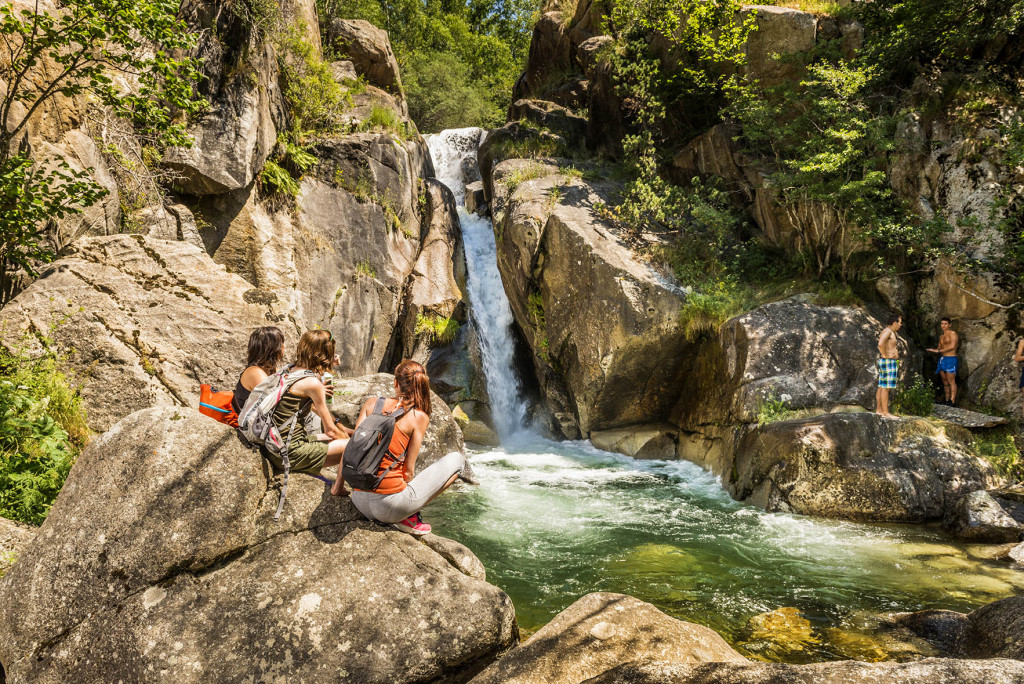20 de June de 2025
VERY IMPORTANT TIPS FOR HIKING IN THE SUMMER!
The high temperatures, characteristic of summer in our country, are already noticeable.
This excess heat, added to the physical effort involved in a mountain trek, can have consequences on the our health.
Therefore, when we do mountain activities in high temperature conditions, we must take into account some very important measures to reduce discomfort when hiking on days when the heat is too strong.
Be an expert at making your hiking routes on very hot days
To get off to a good start on any hiking route, it is always essential to plan the route in advance. It will save you from a lot of problems.

Plan ahead.
• Check the weather conditions.: Search and view on a website the temperature on the day of your excursion, so that you don't get caught by surprise by the intense heat.
• Plan your departure time: There are two hours suitable for hiking on very warm days. Very early or late afternoon, avoid walks around 12:00. At this time, direct sun will increase the risk of skin burns.
• Wear appropriate hiking clothing.: You would think that the ideal would be to bring the least amount of clothing possible, but the truth is that everything has its nuances and recommendations. For certain treks we recommend wearing long-sleeved shirts, mountain pants and a hat, if possible. be made of synthetic material, as it absorbs moisture. Of course, make it as wide as possible, as this will allow better airflow that will keep you cool.
• Use and bring sunscreen: Sunburned skin will only make it harder for you to stay cool, as well as run. risks of sunstroke.
Hiking in very hot climates does not have to be an impossible adventure, in fact, if you follow some advice, you will be able to do this activity without it becoming torture and without putting your health or even your life at risk.
During the route
Hydrate!
Proper hydration will always be the key to any sporting activity, but in the case of hiking in warm climates it cannot be a negotiable issue. Bring more water than you normally drink, as these days your body loses more water through perspiration.
The rule is that, in warm climates,you can sweat out about a liter of water every hour and you will have to rest it to avoid dehydration.
You must avoid dehydration problems at all costs, as they can cause complications in the functioning of the brain, generating confusion and hallucinations. In addition, the blood tends to thicken and this forces the heart to work harder.
Here are some tips so you don't have to deal with these problems:
• Hydrate before going out, a couple of hours before If you do your route it would be perfect.
• Bring enough isotonic drinks (water and sodium), taking into account that between 1 and 2 liters of water are lost for each hour of exercise.
• Don't ration your water, drink whenever you are thirsty, if you notice that your water supply has reached half, it's time to go back, don't continue.
• Check your urine, if you are well hydrated you will produce a larger amount of light-colored urine; but if the urine is dark and concentrated it is an indicator of dehydration.
On the other hand, eat foods with salt which will help you restore sodium levels in your blood, some good options are nuts and dried fruit mixes.

Take regular breaks.
Don't turn your hiking routes into an ordeal, try to make them enjoyable, and for that, what you can do is take breaks in a shady place, perhaps with a view that you'll never forget and where you can take the opportunity to drink water, eat something, reapply sunscreen, and why not, take a photo of the moment. pleasant and without setbacks that you are experiencing.
Be aware of the symptoms of heatstroke
You are Pay attention to the symptoms of heatstroke: cramps or muscle spasms in the legs, cold and clammy or hot and dry skin, weak and rapid pulse, extreme fatigue, panting, abdominal pain, dizziness, nausea, vomiting, or fainting. If any sign is observed in any of the group members, immediate action must be taken.
The most common symptoms of a heat stroke are:
• Fast pulse
• Weakness
• Dizziness
• Fatigue
• Nausea and vomiting
• Throbbing headache
• Confusion
• Disorientation
• Anxiety
• High body temperature (40 degrees Celsius or more).
Heatstroke happens when your body overheats. If you see that you or a colleague has these symptoms, it is important that they receive immediate medical attention.
• Apply the PAS protocol - Protect, Warn, Assist -, trying by all means to ensure that the affected person is never left alone.
• Move the affected person to a cool place or one protected from the sun. It is advisable to try to cool it by any means: undressing, turning it on its side, spraying it with water, applying cold compresses, fanning it or immersing it in bodies of water. If he is aware of it, you should try to replace fluids with an isotonic drink. Never give drinks with caffeine.
• If the situation does not improve, it is recommended to call 112 and provide the exact location of the affected person with geographical coordinates.
Take care of the heat. and very good trip!

